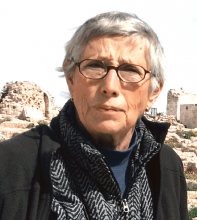You are here
Winning an important battle in Syria
Dec 14,2016 - Last updated at Dec 14,2016
The collapse of insurgent resistance in eastern Aleppo to the Syrian army and its allies has delivered a major blow to relays of insurgents who have occupied this sector since July 2012.
The groups that initially seized the eastern districts associated itself with the Free Syrian Army, while the defenders who hung out until this week were dominated by Al Qaeda’s Jabhat Al Nusra and its equally radical partner Ahrar Al Sham.
Nevertheless, the US and its European allies have wrung their hands in despair over the collapse of the defenders under withering Russian and Syrian aerial bombardment and the relentless advance of Syrian troops, bolstered by Lebanese Hizbollah fighters, Iranian Revolutionary Guards and Iraqi Shiite militiamen.
The Russian air force began flying missions in support of the Syrian army at the end of September 2015.
Moscow, belatedly, took action after insurgents, who had received an injection of funds and weapons from Saudi Arabia, routed government forces around Damascus and seized control of the northwestern province of Idlib.
Moscow’s objectives were to prevent the undermanned and overstretched Syrian army from losing more territory and to enable the government to recoup losses.
In the autumn of 2015, the recovery of eastern Aleppo was a distant prospect, although it amounts to a major military, political and psychological blow to the insurgents, including Daesh and Al Qaeda, and their backers.
Hizbollah, Iran and Iraq have serious reasons for deploying troops in the fight to restore eastern Aleppo to government control.
Hizbollah intervened in the spring of 2012 to protect the Shiite holy site of Sayyida Zeinab and to prevent insurgents, particularly Al Nusra, from carrying out operations or occupying territory in Lebanon.
Hizbollah joined the Syrian army’s drive to clear insurgents from the border town of Qusayr in May 2013 and, subsequently, in battles against Ahrar Al Sham in the other frontier towns of Zabadani and Madaya, and in the liberation from Al Nusra of the Christian town of Maaloula in April 2014.
Iran began its involvement in the war by providing advisers to the Syrian military.
Elite Quds Force commander General Qassem Soleimani appeared on the scene and, eventually, several hundred Iranian troops swelled the boots-on-the-ground confronting the insurgents.
While opposition sources claimed that thousands of Iranian troops had been dispatched to Syria, the majority have been levees from Iran-resident Afghan and Pakistani refugees who had combat experience serving in the Revolutionary Guards.
Iranian-supported Iraqi Shiite militiamen originally joined Hizbollah fighters at Sayyida Zeinab, but larger numbers were drawn into the fighting, gaining battlefield experience useful in the current war against Daesh in both Iraq and Syria.
Iraq also opened its airspace for Iranian flights carrying reinforcements, weapons and aid to Syria.
Damascus’ allies have long-term interests in Syria and in the preservation of the secular regime.
Preventing its overthrow by the rabble of groups branded Free Syrian Army, backed by Turkey, was the initial objective, but as these factions were overtaken or absorbed by takfiri organisations, the commitment of the regime’s external allies deepened to the point that they contributed serious numbers of combatants to fight on multiple fronts.
Russia inherited from the Soviet Union close relations with Syria under the Assads.
Moscow and Damascus made common cause against Israel, which both regard as a coloniser of Palestine and a major threat to neighbouring states.
Moscow and Damascus also challenged the US-led West, which demanded fealty during the Cold War competition with the Soviet Union. Syria was a good customer for Soviet arms, a leading opinion maker in the Arab world, and an active member of the Non-Aligned Movement.
The fall of Iran’s shah dramatically changed Tehran’s regional orientation from being pro-Western to adopting a revolutionary regional approach.
The first Arab leader to visit Tehran after the revolution was Palestine’s Yasser Arafat. Although the Iranian clerics and Arafat soon fell out, Tehran continued to support the Palestinian fight against Israel through Islamic Jihad, Hamas and, above all, Hizbollah, which was established by Iranian Revolutionary Guards during Israel’s 1982 invasion of Lebanon.
Hizbollah was an excellent investment for Iran as the movement’s military wing drove Israel from its occupation zone in southern Lebanon in 2000 and routed Israeli troops during the 2006 war on Lebanon.
Hizbollah is a major player on the Lebanese political scene: its ally Michel Aoun is now president.
The last thing Iraq’s Iranian-supported Shiite fundamentalist government wants to see is a victory in Syria of radical Sunni warlords who would, if the government is toppled, fight each other and provide space for Al Qaeda and Daesh to flourish.
Baghdad would also be uneasy in the unlikely event Syria came under the rule of the Western and Arab-backed opposition which, although claiming unity in the Saudi-sponsored coalition, would not be capable of providing security and stability.
The war did not end with the recapture of eastern Aleppo, but a major engagement was won by Damascus and its allies, giving them a powerful boost and undermining the morale of the insurgents and takfiris.
If Syria is to be preserved as a viable state, Damascus’ partners will have to remain committed to the war against insurgents and takfiris even if a political settlement is reached between the government and outside powers.
This became obvious when, at the height of the battle for eastern Aleppo, Daesh fighters swept back into the ancient city of Palmyra, which had been liberated by government forces last March.













